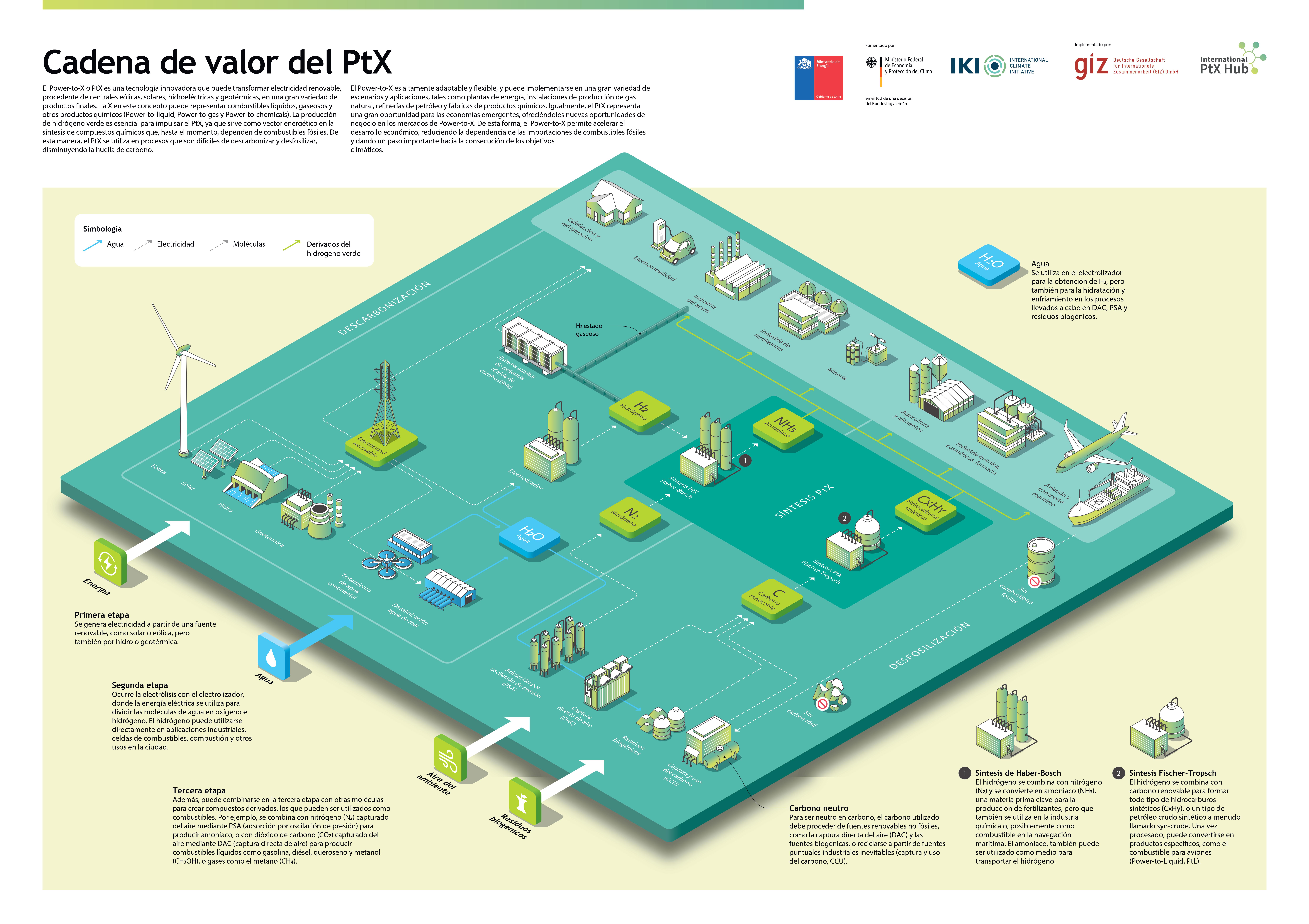The value chain of green hydrogen describes the process from its production to its final use in different applications, detailing the processes or systems involved at each stage and showing the various pathways of this energy vector.
This value chain begins with the definition of the renewable source, such as solar, wind, hydroelectric, or biomass, among others, which is used to produce hydrogen, either through electrochemical conversions, such as electrolysis and photolysis; biochemical conversion, such as bio-photolysis; fermentation, for organic raw materials; and thermochemical conversion, for biomass.
It also includes the storage and transportation of hydrogen in gaseous form in pressure containers, as well as its handling in liquid form (cryogenic), through various means, including pipelines or gas pipelines, whether pure hydrogen or in a mixture with natural gas, transport by trucks and ships.
Additionally, it finally shows the various uses of hydrogen, such as electricity and heat generation, energy storage, its use in transportation, in industry, and also its derivatives such as ammonia and synthetic fuels.
Value Chain of PtX
Power-to-X or PtX is an innovative technology that can transform renewable electricity from sources such as wind, solar, hydroelectric, and geothermal power plants into a variety of end products. The “X” in this concept can represent liquid fuels, gaseous fuels, and other chemical products (Power-to-Liquid, Power-to-Gas, and Power-to-Chemicals). The production of green hydrogen is essential to drive PtX, as it serves as an energy carrier in the synthesis of chemical compounds that, until now, have depended on fossil fuels. In this way, PtX is used in processes that are difficult to decarbonize and defossilize, reducing the carbon footprint.
PtX is highly adaptable and flexible and can be implemented in a wide range of scenarios and applications, such as power plants, natural gas production facilities, oil refineries, and chemical production factories. Similarly, PtX represents a significant opportunity for emerging economies, offering them new business opportunities in PtX markets. In this way, Power-to-X accelerates economic development, reduces dependence on fossil fuel imports, and takes a significant step towards achieving climate goals.
Infographic Elements:
Symbolism: Water, Electricity, Molecules, Derivatives of Green Hydrogen
First Stage: Electricity is generated from a renewable source such as solar or wind, but also from hydro or geothermal power.
Second Stage: Electrolysis occurs with the electrolyzer, where electrical energy is used to split water molecules into oxygen and hydrogen. Hydrogen can be used directly in industrial applications, fuel cells, combustion, and other urban uses.
Third Stage: Additionally, in the third stage, it can be combined with other molecules to create derivative compounds, which can be used as fuels. For example, it is combined with nitrogen (N2) captured from the air using PSA (pressure swing adsorption) to produce ammonia, or with carbon dioxide (CO2) captured from the air using DAC (direct air capture) to produce liquid fuels such as gasoline, diesel, kerosene, and methanol (CH3OH), or gases such as methane (CH4).
Water: Used in the electrolyzer to obtain H2, but also for hydration and cooling in processes carried out in DAC, PSA, and biogenic waste.
Carbon Neutrality: To be carbon neutral, the carbon used must come from non-fossil renewable sources, such as direct air capture (DAC) and biogenic sources, or be recycled from unavoidable industrial point sources (carbon capture and use, CCU).
- Haber-Bosch Synthesis: Hydrogen is combined with nitrogen (N2) and converted into ammonia (NH3), a key raw material for fertilizer production, but also used in the chemical industry or possibly as fuel in maritime navigation. Ammonia can also be used as a means to transport hydrogen.
- Fischer-Tropsch Synthesis: Hydrogen is combined with renewable carbon to form various synthetic hydrocarbons (CxHy), or a type of synthetic crude oil often called syn-crude. Once processed, it can be converted into specific products, such as aviation fuel (Power-to-Liquid, PtL).
